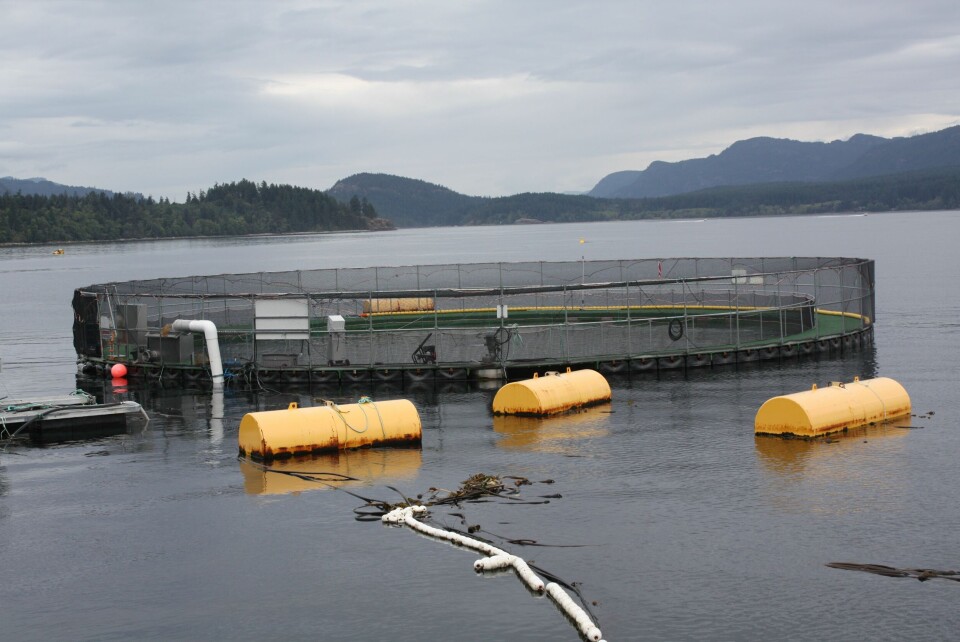
So far so good with floating tank experiment
AgriMarine Industries and its affiliated companies are growing Chinook salmon in a large, 3,000 m³ floating tank at a site just outside Campbell River on Vancouver Island. During a recent visit by a delegation of Norwegian fish farmers, FishfarmingXpert was able to attend a tour of the facility. Company officials explained that the performance of the salmon had been good after being introduced to salt water in late January this year, at an average size of 35 gram. The average weight of the recorded 52,954 salmon on the day of the visit (September 15) was stated at just over 754 gram each, for a total biomass of some 39,945 Kg.
This means that the density of the Chinook salmon is approximately 13.3 Kg/m³- already well over what other fish farmers are comfortable with, using conventional net pen technology. But despite the high density, mortality levels were reportedly low, ranging from 0.03 and 0.3% per month, according to AgriMarine officials. Oxygen levels are kept at saturation levels by adding O² from oxygen generators. And while the company has plans for the installation of three additional tanks at this site, all 52,000 some Chinook salmon currently in inventory are intended to be grown to a harvest size of 4-5 Kg each in this one tank.
The project has now received commitment of funding from the Canadian government’s Sustainable Development Technology Canada to the tune of some CAD$ 5.77 million (~€4.15 million) as well as funding from the B.C.- based Coast Sustainability Trust and the US-based Gordon & Betty Moore Foundation. AgriMarine has received endorsement by a number of environmental groups, including the Coastal Alliance for Aquaculture Reform (including the David Suzuki Foundation, the T. Buck Suzuki Environmental Foundation, Living Oceans Society, the Georgia Strait Alliance and the Watershed Watch Salmon Society) and the Wilderness Tourism Association.






















































